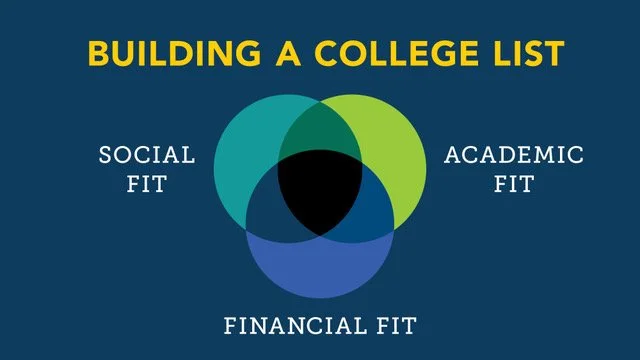Building a College List: A Guide for Rising High School Seniors
Now is an excellent time for rising seniors to plan summer college visits and make progress on finalizing their college lists. Creating a balanced list is more than finding colleges where you stand a good chance of admission; it’s also about finding places where you’ll thrive academically and socially and that are affordable.
Academic Fit: Finding Your Intellectual Home
Academic fit is the cornerstone of your college list. It’s crucial to seek institutions that offer programs aligning with your interests and career aspirations. Start by researching colleges that provide strong departments, innovative programs, and unique opportunities in your potential areas of study.
In addition, consider how the colleges foster academic success outside of the classroom, including research opportunities for undergraduates, internship and co-op programs, facilities, career services, alumni network, and support services such as tutoring and writing centers. Some excellent search engines include College Navigator and BigFuture.
Social Fit and Student Experience: Envisioning Your College Life
Beyond academics, college is a time for personal growth and finding your community. Reflect on what you’re looking for in terms of campus culture, location, size, and extracurricular activities. Are you looking for vibrant Greek life, strong sports teams to root for, or a focus on arts and culture? Do you want a college that offers primarily smaller classes, or are you okay with large lecture courses? A school that’s a good social fit will feel like home and support your personal development and social needs. For some students, the quality and availability of mental health services are important.
In-person visits are invaluable for gauging the campus vibe, meeting potential classmates, and exploring facilities. Virtual tours and online events can provide a sense of the community when visiting campus in person is not feasible. Engaging with current students through social media or university outreach programs also offers insider perspectives on the campus’s social dynamics. Resources such as Appily, Niche, The Princeton Review, and college newspapers can give you a better sense of student life.
Financial Fit: Considering the Investment
Given how expensive college has become, the financial aspect of college selection cannot be overstated. Look for schools that fit your family’s financial situation considering their estimated cost of attendance; factors include tuition, room and board, travel costs, merit scholarships, and need-based aid. Every college has a net price calculator, which can help you understand your family’s likely financial commitment. If you’re looking for merit scholarships, here (see Domestic Undergraduate Need-Based and Merit Aid chart) is data on colleges that offer the most merit and need-based aid.
Ensuring a Balanced List Based on Likelihood of Admission
The foundation of a balanced college list is a couple of colleges where you have an extremely high likelihood of admission and which are a good academic, social, and financial fit. Though traditional labels such as likely, target, and reach colleges can be helpful, there are a lot of nuances in determining your likelihood of admission to any particular institution beyond grades and test scores—including curriculum rigor, grade trends, application plan (early decision is a huge advantage at many colleges), personal qualities, teacher recommendations, essays, extracurricular activities, awards, geography, intended major, and other institutional priorities. For most students, it makes sense to apply to 8-12 colleges.
Demonstrated interest can also be important at many colleges. Some colleges may deny or waitlist applicants above their average academic profile who don’t show interest in the college, which may conclude that the student is unlikely to attend if accepted.
Regardless of how strong of an applicant you are, some colleges—especially those with acceptance rates under 10%—present a low likelihood of admission for everyone. It’s okay to apply to a few reach colleges as long as you have others where your admissions chances are higher. Fortunately, there are many awesome colleges that accept a majority of their applicants.
Let’s get you on the right track for a successful college admissions process.
By carefully considering academic, social, and financial fit and having a balanced college list considering your likelihood of admission, you will be on the right track for a successful college application process. Feel free to contact me if you have questions about creating a balanced college list or any other part of the college admissions process.

